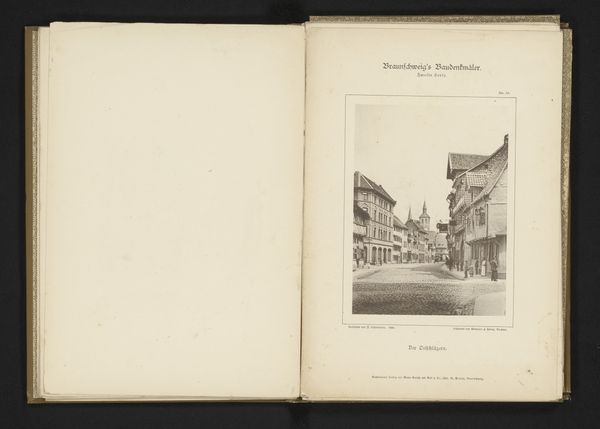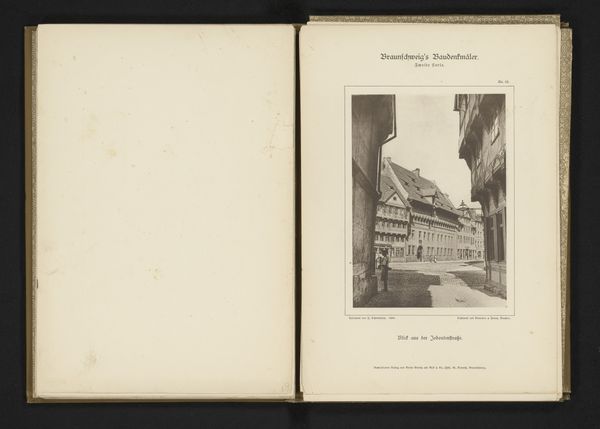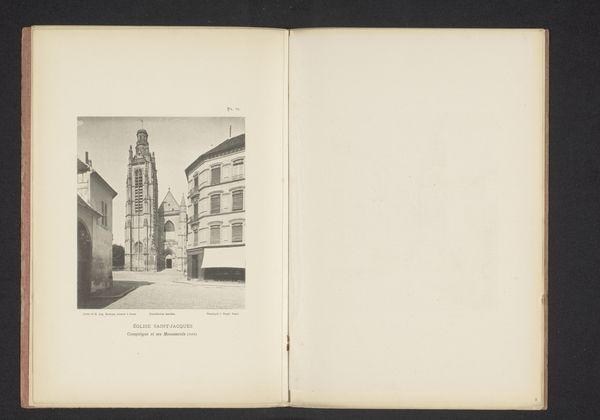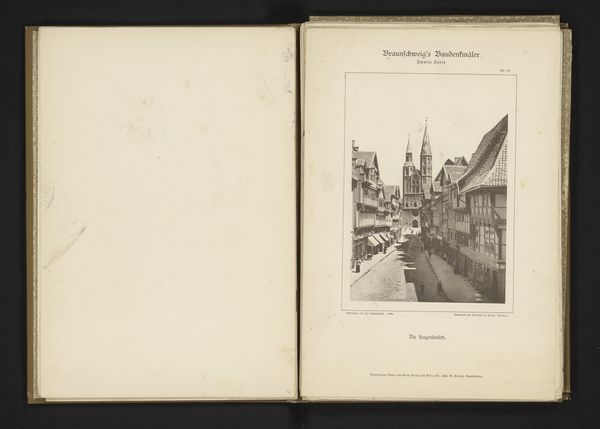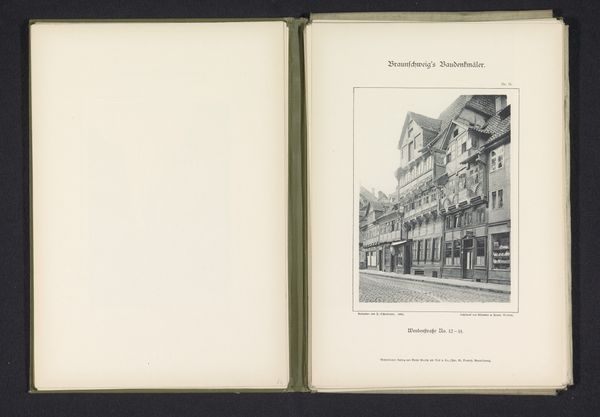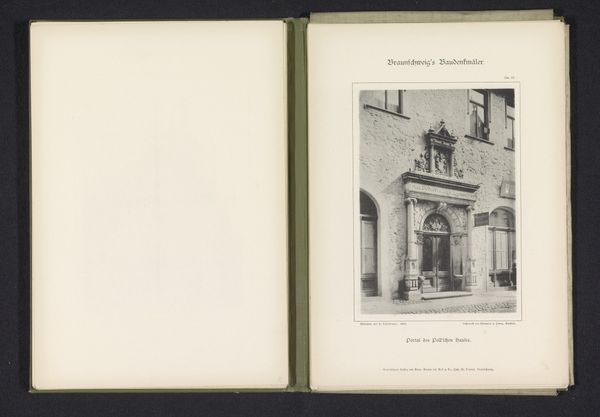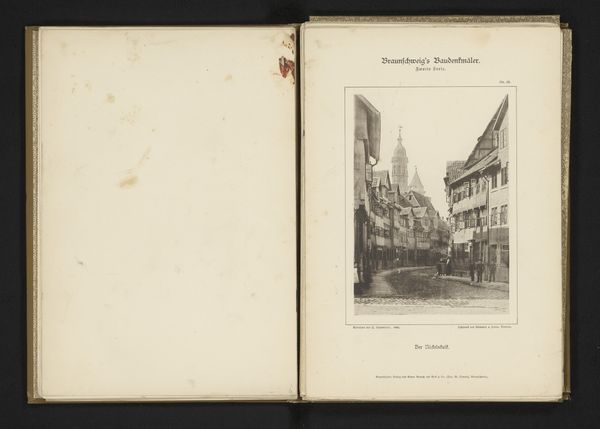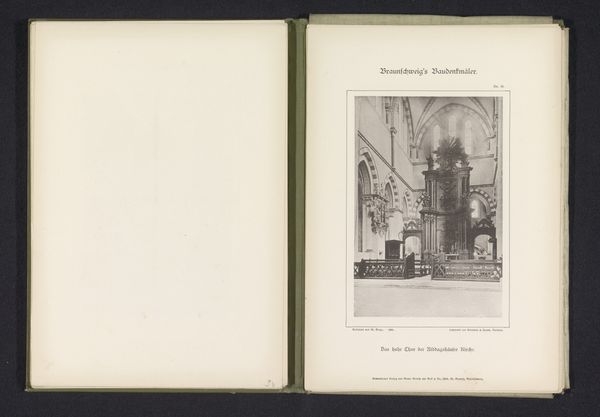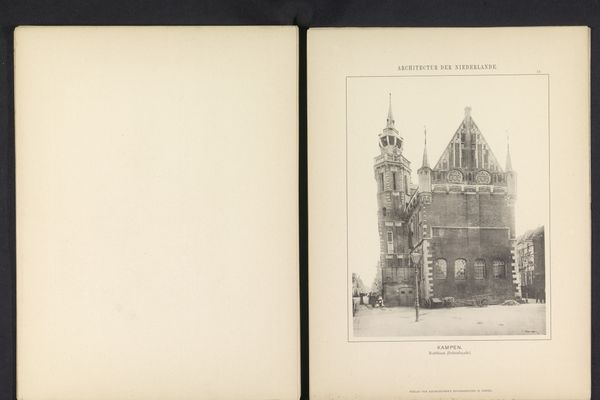
lithograph, print, etching, photography, albumen-print
#
aged paper
#
script typography
#
lithograph
#
paperlike
# print
#
etching
#
personal journal design
#
german-expressionism
#
photography
#
hand-drawn typeface
#
thick font
#
cityscape
#
delicate typography
#
thin font
#
albumen-print
#
historical font
#
small font
Dimensions: height 157 mm, width 112 mm
Copyright: Rijks Museum: Open Domain
Curator: Let's delve into this image titled "Gezicht op de Wollmarkt en de Sint-Andreaskerk te Braunschweig," a work that dates back to 1892 and is attributed to J. Schombardt. It appears to be either a lithograph or etching showcased within a book. What strikes you upon seeing this piece? Editor: There's a somber quality that hangs over it, don't you think? The composition, stark and framed in the book as a single plate, focuses your eye relentlessly on that looming church tower. Curator: Absolutely. Given the time it was made and context of its manufacture as a reproducible print, its process carries important social implications. Was it readily available? Who had access to such images and therefore, to certain ideologies? These questions are pivotal in understanding the broader circulation of architectural imagery at the time. It invites us to examine the book's material form and intended audience. Editor: That tower really gets to me—it feels... dominating. I can’t help but think about the labor that went into those old city structures and this book itself. How the paper itself, the very plates used, the book binders…it gives the scene a more human feel, in a way. It takes me back to studying old manuscripts in school, always wondering about the hands that made them, so many human hours of devotion! Curator: Precisely. And considering its possible origins, was this perhaps part of a broader survey of urban environments of the period, aimed at shaping public opinion regarding urban renewal or civic pride? It prompts further enquiry to think about the conditions under which this work was made accessible, how affordable was it and how the subject matter itself impacted its perception. Editor: The stark light helps build the austere feeling as well; you can imagine the cool gray cobblestones on a damp day. This photo has its own weather, do you agree? Curator: Yes. I see its value as a document recording details about the period’s print media, a moment crystallized through labor and production for a particular, perhaps very targeted, form of consumption and how its message circulated within specific groups. Editor: For me, the power of this print lives more directly in those stones on that cold city street under the dominating shadow. It feels so immediate and evocative; a small glimpse into a big moment.
Comments
No comments
Be the first to comment and join the conversation on the ultimate creative platform.

